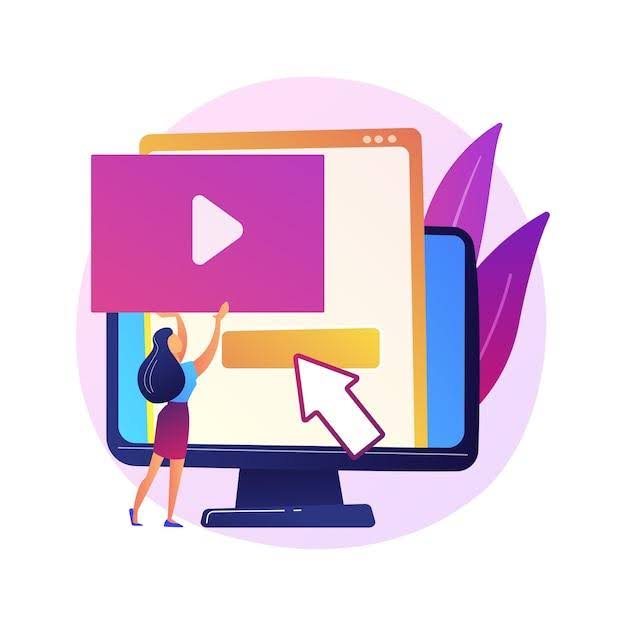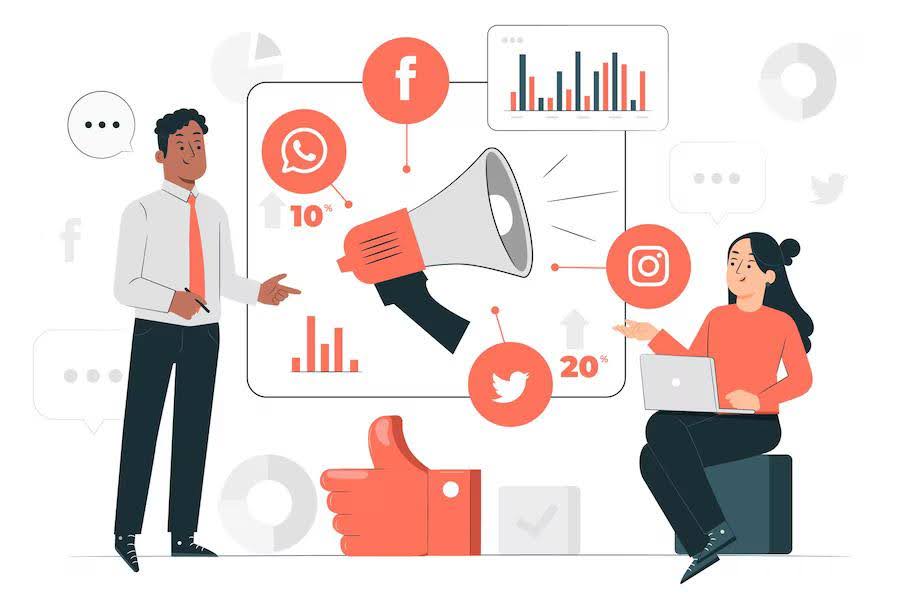Published on: 01 Dec 2020
Reading time: 10 minutes
What is the Objective of Brand Awareness Campaigns?
Most digital marketing campaigns focus on one or both objectives – lead generation or brand awareness. The latter has been a part of digital marketing and conventional advertising for years.
For conventional print and media ads, firms dedicated to collecting consumer responses would get a sample response of the campaign. That, added with the increase in sales or profitability, were considered to be proxies for campaign success. With ads for brands and other similar campaigns, measuring brand awareness has become a more logical task. There are several industry-standard practices measuring key metrics and performance on grounds like brand equity.
How are Brand Awareness and Brand Equity Related?
Brand awareness is the more straightforward and objective measure of how many consumers recall and identify your brand. This can include recognizing the packaging, slogan, logo, and other tangible elements of your brand’s identity. Brand equity focuses on the consumers who are aware of your brand and how this translates into their interaction with your brand.
Substantial brand equity does not have to be correlated with strong brand awareness. Brand equity will make your brand an intangible asset and should result in helping you command a price-premium and/or brand loyalty.
How to Measure Brand Awareness?
Measuring brand awareness is a more sequentially flowing process with established benchmarks used across ads for brands. Here are the metrics commonly measured to gauge brand awareness:
Branded Keyword Traction: Of all the organic traffic, what percentage of traffic has searched directly for your brand? This will help you understand how many consumers are already aware of your brand and its offerings. As branded keywords start generating more traction, you should run paid ads on these keywords. This would ensure that the real-estate space on text or display campaigns is not acquired by competitors targeting the same keyword.
Website Traffic: The organic traffic is a good proxy for brand awareness. Other than that, the traffic which clearly shows a visitor chose your website over your competitors, is also noteworthy.
Social Media Engagement Rates: For most brands, it is easy to get impressions, views, or likes on social media. Consumers prefer engaging with brands only when they have a strong intent to converse about the products or services. All of these can serve as useful measures for brand awareness.
Google Alerts and Surveys: You can do this, no matter how big or small your brand or agency is. Set a Google Alert for your brand and essential products. Every time someone searches for your brand, you will get notified. You can also supplement this research with primary data collected by surveys using SurveyMonkey or Qualtrics.
How to Create More Efficient Brand Awareness Campaigns?
While brand awareness can be a significant revenue and profitability contributor, creating brand awareness generally takes more resources. This is primarily because most budgeting teams allocate capital to areas with tangible results, such as lead generation campaigns.
Even with sufficient budgets, brand awareness campaigns across mobile ad channels can be expensive. Here is a step-by-step process to create efficient brand awareness campaigns. They can virtually yield the same results as a campaign backed by large budgets.
1. Use Rich Media Ads.
Rich media ads consist of a unique ad format beyond the text, image, or text + image concept for ads. Rich media mobile ads can include videos, games, expansive ads, etc.
The motive is to break through the clutter of banner and video ads, generally used in brand awareness campaigns. Google recommends rich media ads for both brand awareness and lead generation.
With rich media ads, communicating even a seemingly complex story becomes easier. The same real-estate space, bid, and attention span are used to deliver more information. Static banners tend to provide only the information available on the banner itself. Video ads can communicate well but are expensive for production and even for bidding. Rich media ads sit right between these two in terms of the cost of production. Yet, they can communicate an intricate message just like a video campaign. Rich media ads can deliver engagements exceeding those of static banner ads by over 267%.
2. Bid Optimization: Go from the Automatic ‘Maximize Conversions’ to Manual CPC.
Campaigns are generally the biggest overheads in most brand awareness exercises. If you are working with Google Ads, you would be familiar with the bidding process. If you are a professional who manages campaigns, you might be using automatic bidding with a focus on maximizing conversions.
Bounteous recently published a case study. It showed how the transition from automatic bidding to manual CPC decreased their cost per click by over 36% in two months.
The agency had been working for a local brand and targeting exact-match keywords. For a considerable time, they witnessed good traction, and manageable ad spends. Then they saw a sudden jump in their monthly ad spends. The spending had increased by 45% in just two months, producing virtually the same results.
The agency’s campaign objective was set to maximize conversions, and the bidding strategy was set to automatic. As soon as the agency changed the bidding strategy to manual CPC, it saw a drop in the ad spends consistently. This unravels the key insight – when you are starting your brand awareness campaigns, automatic CPC will get you traction at reasonable prices. However, as you accumulate enough data to optimize your keywords and ads, you should shift to enhanced or manual CPC bidding.
3. Focus on Mobile Ads for Brands with an Impetus on Social Media.
In a study published by WordStream, mobile ads garnered more clicks at lesser costs. The data showed that mobile ads had a CPC of $0.12 against the $0.30 for desktop and $0.35 for tablet ads. This makes mobile ads 50% more affordable than their counterparts. On top of this, mobile ads attracted 16x clicks relative to desktop ads and 136x more clicks than tablet ads. So, simply focusing on mobile devices can yield good results.
You can further optimize your campaign spends by integrating social media with ads targeting mobile devices. Close to 3.8 billion people are active on all the social media platforms across the globe. And 60% of all social media activity happens on mobile devices. By bringing your focus to mobile ads with social media, you can control your ad spends and still reach a wider audience.
Rich media ads can add another layer of efficiency and data analytics to this. Unlike static banner ads, rich media ads can carry multiple landing page links or social media links on one property. This gives you more data on how viewers interact with your rich media ads.
4. Become a Content Marketing Platform with Blogs, Newsletters, and Other Content Formats.
Running ads and other forms of paid ads is a great way to quickly scale the reach of your brand awareness campaigns. However, such campaigns come with recurring production costs. Each creative has a shelf-life of about 1-4 weeks, depending on the frequency of views and the placement. This shelf-life is calculated by Nielsen using the concept of ‘Adstock Decay’. It focuses on determining the half-life of an ad, after which the efficacy of the ad drops by over 50%.
Even at the highest rate of effectiveness, you will have to significantly change your ad creatives every four weeks. Generally, campaigns tend to take 12 weeks for converting a viewer into a lead and then into a customer. Content marketing can be a more efficient form of delivering information, garnering branded keyword mentions, and creating brand equity.
On most of the blogs operated by content marketing pioneers like Hubspot, you will find content that was originally created years ago. Every year, updated data and perspectives are added to it. And the pages continue to maintain their authority. This way, for a fraction of the cost of an entire ad campaign, a blog can yield results for years to come.
Howard Marks, the co-founder of Oaktree Capital, regularly writes his ‘memos’ which are released on the company’s website every month or quarter. The entire financial news media picks it up and produces more content around it. This gives Oaktree a significant bump in its brand awareness without the firm having spent even a penny in campaigning. The same idea is used by several successful investors like Warren Buffet and Seth Klarman as well.
Blogs and newsletters are just some forms of content. You can run podcasts, produce e-books, provide case-studies, or even run online courses to help your customers solve their pressing issues. Content marketing takes time to yield the results most brands see. And hence, you should use it as one of the several methods in your marketing mix to generate cost-effective brand awareness.
5. Give Free Product Trials.
Consumer Packaged Goods companies have been using free product samples to create brand awareness for years now.
Event Marketer and Mosaic conducted a survey. Over 47% of the respondents preferred having sampled or have seen a product demonstration before they made a purchase decision.
Most retailers already understand the impact of providing free samples. Cadent Consulting Group reported that over 76% of retailers believed providing samples and product demonstrations helped in generating sales.
Free trials can be a good way to start the conversation if brand equity is the eventual goal. Free trial as a concept has garnered increasing interest. The search term’s traction has grown on Google Trends by over 15% in just one year.
Airtory can make it easier for you to create sequence ads. They track the user’s past interactions with the ad. And then, help you post ads that push the lead towards the next stage in the conversion cycle. This way, you can create a unified sales process that begins with a free trial keyword associated with your brand. The process can then end with conversion can help you get more organic traction. It augments your brand awareness and conversions for lead generation – all using a single campaign.
6. Gamify Your Mobile Ads.
Mobile ads tend to generate more traction because of stronger intent. If your business has a large local market, you should definitely consider brand awareness campaigns that actively focus on location.
Besides this, gamifying your ads can help in generating higher interactions and more time for brand visibility. Mazda launched a campaign ‘Challenge the Night’ while launching a new car. The campaign was a rich media ad positioned for mobile phones and desktop platforms. It allowed the users to drive the car within the environment of the ad across a minimalistic track. As the user progressed in the game, she/he would witness challenges. Relevant functionalities of the car would help the user explore its features in a more interactive manner.
The campaign generated a 78% replay rate, clearly highlighting the increased engagement. The interaction rate for the rich media ads was 6x that of industry averages. Static banner ads or video ads would be sub-optimal from a cost perspective if your aim is to get similar results. With rich media ads focusing on mobile ads networks, you can generate deeper engagement across a wider audience base even on smaller budgets.
7. Create Seamless Experiences Between Incentive-Based Ads and Landing Pages.
By integrating free samples and content marketing, you can launch incentive-based brand awareness campaigns. This would necessitate a deep understanding of your target audience’s pain points. Post this, you can create content or media assets that address those problems and provide possible solutions.
BigCommerce recently published research. It showed that it would be nearly impossible to scale to $20 million and beyond without using a landing page. Unlike a product page, a landing page is for a targeted audience that has been attracted using paid channels. Hence, each landing page iteration has to be optimized for conversion with forms, CTAs, and the configuration of elements.
While doing all of this on the landing page, it is easy to forget the link between the brand and the landing page. Some landing pages fail in communicating the brand and its values. If you are running a paid campaign for brand awareness, make sure you do not make the same error.
The idea of aligning the landing page with the brand and personalizing it for each visitor is novel but difficult to execute. In the process of optimizing the landing page for brand awareness and personalization, you would not want your CACs to skyrocket. Airtory to bring down the costs of producing optimized landing pages aligned with your brand guidelines.
The Airtory platform carries over 80 different templates that can help you create truly dynamic landing pages with HTML or AMP.
In Conclusion
Airtory and mobile ads can help your brand generate significant amounts of awareness, without denting your marketing budget.
Schedule a demo




